#What is Web 4.0?
Explore tagged Tumblr posts
Text
i work in tech. and i get real annoyed when im trying to have beers and chat with my fellow colleagues and say 'yeah i think this is wild how the 'net's going and i wanna work on something new' and they're like "yeah something new will come up soon" and it's like.
ugh, no. you're not getting me. I want to be part of that something new. i want to try even imagine what something new could look like. why don't you wanna play the game with me. why don't you want to imagine
#internet#web#internet 4.0#can we call it that yet#surely 3.0 is kinda a disaster#but what if the html's and the css's and the js's and the react frameworks and backend servers etc are kinda done#like how no one dials into bulletin boards anymore#i know there are niche web protocols and some have some dope zines#i guess i'll just miss my tumblrinas when it all comes down
4 notes
·
View notes
Text
What is Web 4.0?

Explore the concept of Web 4.0, its innovations, and how it reshapes digital landscapes for a smarter, interconnected future.
Introduction to the Internet and its definitions
Internet is a large system that connects multiple servers and systems of computers, and mobile phones globally. Internet as per its definition is described as “networks of networks” that serve as crucial elements when it comes to communication between two distinct resources in the digital world. The conformations of the internet have always helped to transform day-to-day communication with every aspect that inclines us towards modern living.
World Wide Web is simply in common terms is pile of pages which are interconnected among each other and follow protocols called HTTP for communicating data between servers and clients. The World Wide Web referred to as the Web, is one of the subsets of the Internet that monitors and mediates interaction between users like us and the digital content available dynamically.
With the advancement in technology standards and user behaviour web is evolving and every time with the addition of new features it emerges as the new version. In this article, we will delve into the latest and most intelligent version of the web now i.e. Web 4.0 and consider it as the next evolutionary and significant step in the growth and development of the internet. Web 4.0 is still in the conceptual stage which means it has not yet been released, however, it is believed that the commencement of Web 4.0 could involve building AI tools of advanced level that turn out to be more responsive and intelligent.
History of evolution of Web and its versions
WEB 1.0
WEB 1.0 (Static web): As the name suggests, static web was used to deliver consumer with the content exactly the same as uploaded by the content creator. Later this static character of web got a code name of WEB 1.0 Web 1.0 was a “read-only” web. The basic core for this web was community governance, decentralization of networks, creation and contribution of content for the web.
HTTP, SMTP, FTP, IRC and SMS were the open protocols which made a foundation stone for Web 1.0. These protocols were crucial as anyone can easily work with them and make the content for the web Web 1.0 is the term used to describe the earliest form of the internet which sets the first example of a “global network”, which showed the potential for future digitalisation of Information sharing and communication.
This Web 1.0 was created in 1991 by TIM BERNERS LEE who is an English computer scientist best known for invention of the HTML markup language, the URL system, and HTTP along with WORLD WIDE WEB being his most famous invention. It was known as “static web” or “read only web” as it had no visuals, controls, forms and interactivity. It was all about web pages which are connected to a system with the help of hyperlinks.
In 1993, the web became available to the public and lead to Rapid increase in website that were created.
By Early 1995, over a million websites were available and this growth continued throughout the late 1990s and early 2000s.
Web 2.0
The Creation of most important COOKIE: (HTTP COOKIE) To overcome one of the first limitations of web 1.0, which was being STATELESS.
As discussed earlier, web 1.0 was unable to capture state or user data and could not convey any data related to the user to web developer such as if the end user had previously visited the website or not and it was being difficult for a web developer to know the demographic of the end user, which meant you could not build products or services specifically targeted for your end users.
In first attempt of solving this limitation of capturing state or user data, LOU MONTULLI, a computer programmer came up with the invention of HTTP cookie with which developer can tell if the user had visited a website previously or not.
And, with this invention, now that we were being able to capture user state the Web transitioned into Web 2.0.
Web 2.0 often being referred to as “read and write” web, spans from early 2000s to current period. The the word web 2.0 was first given by DARCY DiNucci, a technology strategist.
WEB 3.0
THE FUTURE The inventor of world wide web TIM LEE, originally called web 3.0 as “semantic web “as it was conceived as a more autonomous, intelligent and open Internet. Web 3.0 is often described as read, write and execute. The open internet, we are talking about would involve AI and ML which would process content like a “global brain” with all data being connected in a way that is contextual and conceptual, but this didn’t work as planned because Tech just wasn’t at the right place.
In web 3.0, users can interact in a decentralized way, but with security. From money to information, all exchanges are conducted without the need of tech companies, banks, or any other middleman so if web 2.0 makes the user a product, web 3.0 makes the user the content owner.
Basically, the goal of web 3.0 is to make the internet more intelligent, personalized and responsive to users need, and to achieve this, Artificial Intelligence and Big Data are being used to create a semantic web that understands the meaning of information on internet and this will allow for more appropriate search result, better recommendation and more personalized experience to the users. The web 3.0 has shown the potential to transform the internet into a much more powerful and useful tool for everyone, from a developer to the end core user. With the help of Web 3.0, it is now possible for devices to interact with each other directly without the need for human intervention.
Difference in Web 4.0 from Web 3.0
Web 3.0 (Semantic Web)
Decentralization: Often termed the “semantic web,” Web 3.0 aims for a more decentralized, open-source, and immersive online experience. It facilitates user participation, content creation, and ownership without dependence on intermediaries.
Blockchain Infrastructure: Web 3.0’s infrastructure relies on the blockchain—a public ledger—allowing trustless interactions among users without reliance on a central authority.
Monetization and Ownership: In contrast to Web 2.0, where platforms profit from user-generated content, Web 3.0 empowers users to monetize their data and retain ownership of their contributions.
Elements: Web 3.0 integrates decentralization, artificial intelligence, augmented reality, virtual reality (AR/VR), and ubiquity.
Web 4.0 (Intelligent Web)
Web 4.0 is way more decentralization and integration with Machines-
It has Higher Decentralization: where Web 4.0 extends decentralization further, aiming for a simpler and more integrated internet connected to human thinking and cognition, without precise definition.
It comprises features of Cerebral Web where Some sources suggest Web 4.0 will be more “cerebral” as it involves deep learning indicating a deeper connection between human minds and the digital realm.
Web 4.0, Mentioned by Elon Musk and Twitter founder Jack Dorsey, Web FOUR, a meme coin, humorously reflects the concept of the next internet iteration. While not directly addressing Web 4.0’s technical aspects, Web four promotes accessible decentralization¹.
Web 3.0 Critique: Musk and Dorsey argue that Web 3.0 lacks true decentralization and primarily serves venture capitalists (VCs), citing ongoing capital concentration issues.
Advancements in features of Web 4.0
In the ever-evolving landscape of the internet, the emergence of Web 4.0 marks a pivotal moment where technology succeed with its previous predecessors and their boundaries, which offer users an unprecedented type of personalization as well as customization. In the Centre of evolution there stays the utility of advanced artificial intelligence (AI) and machine learning algorithms, empowering Web 4.0 to deliver tailored content as per the preferences of users and services with unique and accurate precision. Web 4.0 has its special features to adapt the user that too individual user preferences creating a digital experience that feels uniquely crafted for each user.
Central to the promise of Web 4.0 is its augmented interactivity, which redefines how users engage with digital content and services. Through the integration of immersive technologies such as virtual and augmented reality, Web 4.0 elevates user experiences to new heights, blurring the lines between the digital and physical worlds. This heightened level of interactivity enables users to interact with information and services in ways previously unimaginable, opening doors to innovative and groundbreaking experiences.
In conclusion, Web 4.0 represents a convergence of technologies that hold the potential and strength to shape and transform the future where innovation and creativity are limitless and knows no bounds. By embracing and encouraging creativity, collaboration, and a forward-thinking broad mindset, we can harness the power of Web 4.0 to create a digital landscape where there are endless opportunities and the future will possess a positive change within itself.
Source: https://www.agicent.com/blog/what-is-web-4-0-explained/
0 notes
Text
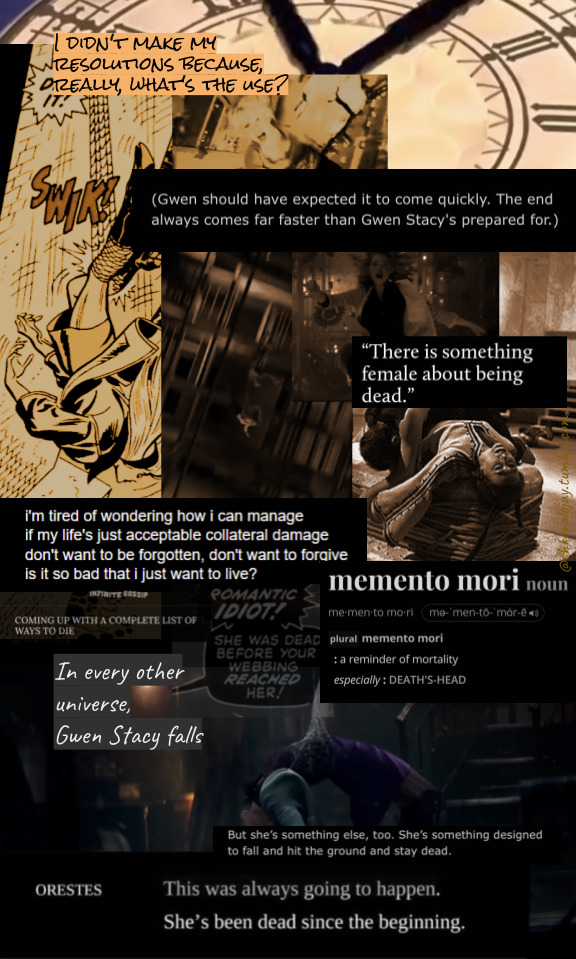
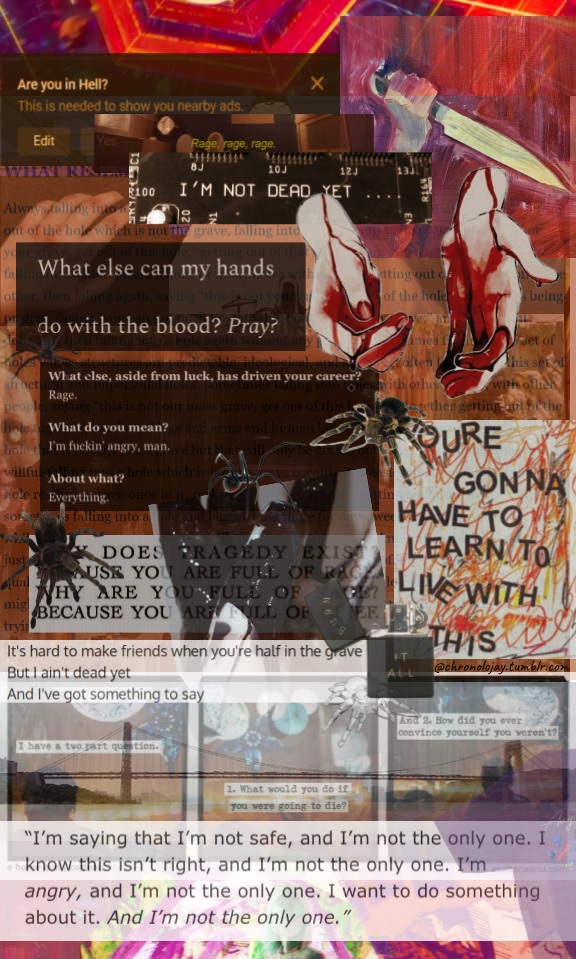
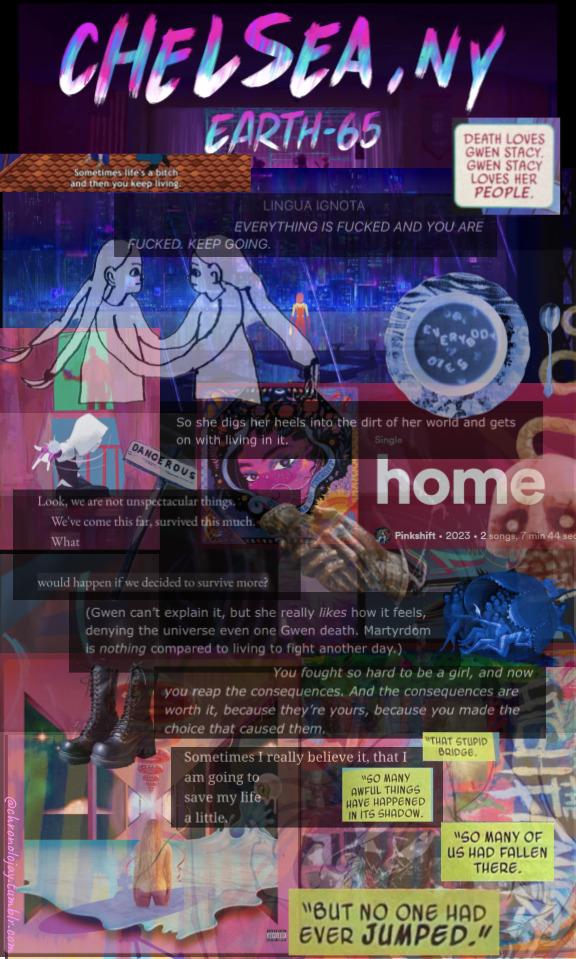
gwen stacy, arachnophobia. a web weave based on the incredible fic by @rappaccini
this fic changed the way I think about gwen as a character and got lodged in my brain since I first read it. its a fic that makes you want to make art about it and it is absolutely worth your time.
Sources under the cut
PART 1: The Fall
IMAGES:
The Amazing Spider Man 2. Directed by Marc Webb, performance by Emma Stone, 2014. Gerry Conway, writer. The Night that Gwen Stacy Died. Pencils by Gil Kane. Inks by John Romita. Colors by Dave Hunt. Letters by Artie Simek. The Amazing Spider-Man #121, 1973. @gui_la_ume, TikTok, 2023, LEGO Spiderman Animation, https://www.tiktok.com/@gui_la_ume/video/7245780799251860763. Lavergne, Max. "Coming Up With a Complete List of Ways to Die", Infinite Gossip, Sep 28, 2023, https://infinitegossip.substack.com/p/coming-up-with-a-complete-list-of. Pal, Marijan. "Ajshil, Oresteja, SNG Drama in Ljubljana", Wikimedia Commons,1968, https://commons.wikimedia.org/wiki/File:Ajshil,_Oresteia,_Drama_SNG_v_Ljubljani_(4).jpg. Spider-Man 3. Directed by Sam Raimi, 2007.
TEXT:
the garages. "solar eclipse". https://open.spotify.com/track/23y7JvIq11f1NHnwxWC27P?si=7b4482b1601e40de Madison, Piper. "Phonograph" . https://open.spotify.com/track/13ypXt9ag0Rq8uLBe2tZqn?si=d0aab028801e419d “Memento mori.” Merriam-Webster.com Dictionary, Merriam-Webster, https://www.merriam-webster.com/dictionary/memento%20mori. Accessed 1 May. 2024. Oates, Joyce Carol. Blonde: A Novel. 2000, ci.nii.ac.jp/ncid/BA68593021. The Oresteia, Aeschylus rappaccini. arachnophobia. https://archiveofourown.org/works/48363238/chapters/121980043 Spider-Man: Across the Spider-Verse. Directed by Joaquim Dos Santos, Kemp Powers, and Justin K. Thompson, 2023.
PART 2: Rage, OR: Tear It All Down
IMAGES:
Area 51 circuit board, "I'M NOT DEAD YET" via https://arcadeheroes.com/2014/04/20/arcade-games-easter-eggs/ are you in hell via https://www.tumblr.com/screenshotsofdespair/705113397985968128 A Softer World. www.asofterworld.com/index.php?id=891. bloody knuckles. https://i.pinimg.com/originals/68/68/62/686862f692cfb5e02b76013701ff3347.jpg burn it all lighter via https://png-heaven.tumblr.com/post/675085348575084544/love-still, https://www.etsy.com/listing/717241294/personalized-lighter-zippo-engraved caitlynsarah95, "Hands". Deviantart, May 3, 2019, https://www.deviantart.com/caitlynsarah95/art/Hands-796203302. Daley-Ward, Yrsa, "all the wrong colours" "DIY Three Ingredient Venom Slime", elledoingstuff, https://web.archive.org/web/20201126155036/https://shedoesstuff.com/2018/10/22/diy-three-ingredient-venom-slime/ Gerhard Richter Untitled (5 Jan 1990), 1990 Marchese, David. “Kathleen Turner, in Conversation.” Vulture, 7 Aug. 2018, www.vulture.com/2018/08/kathleen-turner-in-conversation.html. MarianneCreates, "live with this", via https://www.redbubble.com/shop/ap/98874045 McGuire, Seanan, and Rosi Kampe. Spider-Gwen: Ghost-Spider Vol. 1. Marvel, 2019. Melissa P. Directed by Luca Guadagnino, 2005. Paskow, Linnea "Splitter", 2020. https://linneapaskow.com/paintings-/18 Roland Arhelger, CC BY-SA 4.0 <https://creativecommons.org/licenses/by-sa/4.0>, via Wikimedia Commons, https://commons.wikimedia.org/wiki/File:Verrazzano-Narrows_Bridge_(New_York).jpg Sin, Nata. "Menotaxis", November 8, 2022. https://instagram.com/nata__sin__?igshid=MzRlODBiNWFlZA== "Spider PNG image image with transparent background", via https://pngimg.com/image/4537. "Spider Transparent #1558430", via http://clipart-library.com/clip-art/spider-transparent-2.htm. "Spider PNG Image" via https://www.pngall.com/spider-png/download/1726 Spider-Man: Across the Spider-Verse. Directed by Joaquim Dos Santos, Kemp Powers, and Justin K. Thompson, 2023. "Transparent Spider Gif #1587577", via http://clipart-library.com/clip-art/transparent-spider-gif-23.htm. "Transitions Purple T-Shirt + Download", august, via https://store.augustalsina.com/products/transitions-purple-t-shirt-pre-order-download
TEXT:
Boyer, Anne. "WHAT RESEMBLES THE GRAVE BUT ISN’T". 2017. Moyers, 17 April 2017, https://billmoyers.com/story/poetry-month-what-resembles-the-grave-but-isnt/ Carson, Anne. H Of H Playbook. New Directions Publishing Corporation, 2021. Euripides. Grief Lessons: Four Plays by Euripides. New York Review of Books, 2008. Lord Huron. "Not Dead Yet", https://open.spotify.com/track/5NRbNXwXHM9mYgxMhzVWTP?si=d55caaf2461a4675 rappaccini. arachnophobia. https://archiveofourown.org/works/48363238/chapters/121980043
PART 3: Live
IMAGES:
277: Venetian Memento Mori Earrings, Ragoarts.com. www.ragoarts.com/auctions/2021/07/summer-jewels/277 beigeandrose. “The 1990s Goth Faux Leather Lace up Chunky Heels Platform Boots Size US 8.” Etsy, www.etsy.com/listing/117460104/the-1990s-goth-faux-leather-lace-up. “Clasped Hands of Robert and Elizabeth Barrett Browning.” The Metropolitan Museum of Art, www.metmuseum.org/art/collection/search/11156. Coello, Iban. Carnage-ized Variant Cover, Spider-Gwen: Ghost-Spider Vol. 2 - Impossible Year. Marvel Entertainment, 2019. Forcibly Feminized at the Pharm, The High Femmes, 2022 Hodan, George. "Spider Web." PublicDomainPictures.net, https://www.publicdomainpictures.net/en/view-image.php?image=21073&picture=spider-web Home, pinkshift, 2023 "Nice While It Lasted." Bojack Horseman, created by Raphael Bob-Waksberg, season 6 episode 16, Netflix, 2020. Rainbow, Kesha, 2017 Shinkai, Makoto, and Midori Motohashi. The Garden of Words. Kodansha Comics, 2016. Skin-N-Bones. “An top down image of red soup, on a blue background, with noodles spelling out ‘Everybody Dies.’” Tumblr, 12 June 2013, skin-n-bones.tumblr.com/post/52800040011. Spider-Man: Across the Spider-Verse. Directed by Joaquim Dos Santos, Kemp Powers, and Justin K. Thompson, 2023. "Spiderman Graffiti, Pittsburgh", by chronolojay “THAT’S BELIEVABLE!” Tumblr, 3 Mar. 2024, www.tumblr.com/thatsbelievable/743968419651665920?source=share.
TEXT:
Latour, Jason. SPIDER-GWEN VOL. 6: THE LIFE OF GWEN STACY. Illustrated by Mike Ploog, Cover Art by Robbi Rodriguez, vol. 6, Marvel Universe, 2018. Limón, Ada. “Dead Stars.” Poets.org, 1976, poets.org/poem/dead-stars. rappaccini. arachnophobia. https://archiveofourown.org/works/48363238/chapters/121980043 Zusak, Markus. The Book Thief. Knopf Books for Young Readers, 2007.
#web weave#web weaving#across the spiderverse#gwen stacy#spider gwen#ghost spider#arachnophobia fic#spiderverse#atsv#atsv gwen#(kinda) but it does fit - i think enough to justify the tag#this is my fic rec and also my rec of the garages who i don't think i can make a weave without including their songs.#ive been working on this for so long it is a bit terrifying to post now. do it scared and all that!#and then i can figure out links to post the separate parts#webweaving
51 notes
·
View notes
Note
OP your linework! Absolutely gorgeous. Do you make any comics outside fanart? Is there a webcomic out there I can read?
Thank you for the kind words :3
I have had a few instances of almost trying to draw something with a thought of turning it into a web comic... I am a storyteller at heart, dialogue writing, worldbuilding and narration is what I love, in dnd for example. So of course I thought of it, but...
There is so much more I need to learn and get used to before I commit to that. I know a lot of people say "just start and you will learn as you go" but I have a fear that my motivation and investment won't be strong enough to push me through the learnign curve long term, if you get what I mean. So for now I use fanart and my brainworms to learn. I need to get used to rendering, colouring, background drawing and, worst of them all - framing :D So I take it small steps at a time, trying things here and there. I only got comfortable posting things, or well drawing overall, in the past what 3 months or so. Genshin 4.0 really did it to me huh... before that I mostly drew private doodles for ocs or dnd stuff and that too very rarely. And I love seeing how much more efficient, comfortable and proficient I have become with some things :D
So... one day o7
I have a big comic of around... 15 pages that I am working on for Neuvillette and Wriothesley that I hope to get out as a christmas gift of appreciation for all the support I got online. That's my first do or die ahah
TL DR: I want to improve at some things first, but I want to do something non fanart related story driven later. If I do I will let people know
69 notes
·
View notes
Text
Music's Origins
Much of human history is silent. We have lost the exact sounds of anyone living prior to the invention of the phonograph in 1877. We have lost the sound of any music not written down or passed down prior to the advent of musical notation in approximately 1400 BCE.
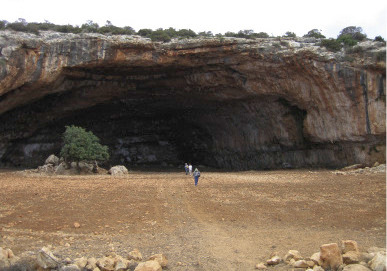
By Graeme Barker - https://doi.org/10.1016/j.jhevol.2013.10.001, CC BY 3.0, https://commons.wikimedia.org/w/index.php?curid=117787341
Singing was most likely the first type of music, though why humans started singing isn't certain. What we can know from modern peoples that are preliterate is that that singing likely contained mimicry of sounds found in nature. It also likely would have been different in a cave compared to a valley compared to an open area because of the acoustics amplifying and distorting various sounds. It likely impacted all parts of life, from hunting to religious or shamanistic practices. The presence and location of the hyoid bone, a horseshoe shaped bone that anchors the tongue and other muscles at the base of the mouth, in Neanderthals going back at least 60,000 years ago, based on the oldest one we have found, was in the same place that our hyoid bone is, making it possible for them to make the same range of sounds we can, so there's a good chance they also made music similar to that of early modern humans. Some research also points to 'motherese', the higher pitched, simplified, and rhythmic way people talk to babies, may be a source of music, as well.

By Marco Ciaramella - Own work, CC BY-SA 4.0, https://commons.wikimedia.org/w/index.php?curid=49257610
The oldest item that is unquestioningly a musical instrument is a bone flute that dates back to about 43,150-39,370 years ago. This is within the time frame that Neanderthals still were on the earth. There are hollow bones with deliberate holes in them that go back over 100,000 years ago. Research suggests that rhythmic instruments could have developed from stone working and the sounds of working, such as pounding seeds and roots, or as a way to keep people in tandem for work or dance, or as entertainment. There are also studies on tonal instruments made of rocks such as lithophones and ringing rocks and how they would resonate in various locations, including megalithic sites.

By Ashley Van Haeften - https://www.flickr.com/photos/wikimediacommons/24359772993/, CC BY 2.0, https://commons.wikimedia.org/w/index.php?curid=46942619
During the Old Kingdom of Egypt, from about 2700-2200 BCE, stringed instruments begin to show up in artwork with arched or bow harps in murals with single and double pipes. Percussion instruments, including cymbals, and lutes were added by the Middle Kingdom, 2040-1782 BCE.

By Unknown - https://web.archive.org/web/20061129004621/http://www.nationwide.net/%7Eamaranth/hurrian.htm, Public Domain, https://commons.wikimedia.org/w/index.php?curid=6995883
The earliest writing of music is found in the cuneiform tablets of Sumer. Musical theory and instructions on composing and performing music have been found dating to 2000 BCE, though exact interpretations are varied. The oldest written music is from Ugarit from about 1400 BCE, which was a Hurrian hymn to Nikkal, a goddess who was the spouse of the moon god. The Hurrians lived north of the Akkadians and also used cuneiform script.
You can listen to the Hurrian Hymn here (15 years old recording) or here (by Peter Pringle, 4 years ago).
7 notes
·
View notes
Text
Okay, as someone who has so far only heard the first two episodes (and season trailer) of The Magnus Protocol, I'm going to try to write down my own little thoughts for the communal red string board. I don't actually think Jonah is linked to the computer voices, I think the third voice will be Annabelle Cane's, and the reason the voices weren't part of the computer system until about a year ago is because they're linked to the Archives Reality Tape Web™ attaching itself to the Protocol Reality, remember the voice of the Archivist was the important part and the tapes were just a way for the Spider to steer that voice where it wanted the Fears to go, they followed the Archivist's voice and the Archivist's voice being in Protocol means the Archives Reality Fears did find the Protocol world, and have just become part of the Fear there. So far so normal, the voices are from Archives, so are probably avatars the Archives Fears brought with them. This is where it gets a little weirder, I don't think they're actually linked to the computer any more than the rest of the Statements are, my theory is that the computer is picking them up as Something Spooky and compiling it with the rest, and the owners of these voices are still in a remote location unrelated to the Protocol PCs. But they're clearly reading Protocol Reality Statements so here's where I'm torn between two ideas. They as people are reading out these Statements to feed the Fears and the computer is adding their spooky voices to the file. Or, the voices themselves were what was considered Spooky and the computer added them, but as it was just a voice and not really any associated story or text the PC didn't actually know where to file them and because of this the voices just became incorporated into the system, floating in uncategorizable limbo. But our blorbos might not be trapped in a modified version of Windows NT 4.0, the businessfocused predecessor to 95.
Please feel free to add your own thoughts to this, I would love to hear them, I'm literally putting this on the internet so me and the three people who see this can laugh about it in a year's time.
#well this was a text wall#far more of a text wall than I planned it to be#but I wrote it and now you can read it#and in that we are connected across distance and time#my Cassette Tape Web™ has begun#yes I know Reddit is usually the place for theory posts like this but I'm already comfy here#tmagp spoilers#tma spoilers#the magnus protocol#the magnus protocol spoilers#tmagp
21 notes
·
View notes
Text
[4.1] The Primordial Sea Pt. 2: Creation as the Key to Sin

EDIT (1/20/2024): to you, reader of the future, past me was very very wrong about this theory! like, misunderstood the lore levels of wrong. so take this post as fanfic if nothing else, it is not correct especially in the understanding of how imagination played into Caterpillar’s creation. Sorry for the blunder!
In 4.0, I wrote two theories: one was a short speculative theory on the nature of the Primordial Sea, and the second was a theory about Rhinedottir and the reason she is considered a “sinner.” With 4.1’s release, including the Archon Quest and the world quest Unfinished Comedy, I believe there is now enough information for a short follow-up theory that synthesizes them and makes one more attempt to understand 1) what it means to be a “sinner” in Teyvat, and 2) what it means to be “born with sin.”
SPOILERS: Fontaine Archon Quest up to the end of Act IV, Ancient Colors, and some dialogue from the end of Unfinished Comedy, which is a world quest with the NPC Caterpillar in the Fortress of Meropide. You have been warned!
edit: please excuse some formatting errors I’ve noticed that are only visible on mobile with some of the bulleted lists. on web, the post seems to be okay. I will fix these asap!
First I’d like to summarize the two previous theories and their main findings/points. They’re linked above if you’d like to read them in full, but it’s not necessary to follow the rest of this post.
In the Primordial Sea theory, I theorized that it could be either of these two things:
The blood of some higher being.
Who: Either Nibelung or the first Hydro Sovereign, based on the weapon ascension material lore from Fontaine
Why:
The copious End of Evangelion references in the Fontaine AQ, including how Primordial Seawater behaves so similarly to LCL, which is the blood of Lilith, who is the progenitor of humanity in Evangelion
Several life forms in Genshin have arisen from a higher being’s blood too such as the Melusine and the Jinn (technically, in the latter’s case).
The “water” in Elynas is described as “blood” by Jakob, a very peculiar description given all of the above
The amniotic fluid of the egg that hatched the Primordial One
Why: Idk man it just seemed like a possibility at the time.
Needless to say, as time goes on I’m more convinced that it’s likely the first option, blood. I have even more reasons beyond the above to believe so, but they will be outlined in another theory I’m working on right now about the Urstone in Yoimiya’s second story quest.
In the theory about Rhinedottir and the meaning of “sin,” I used Sigmund Freud’s psychoanalytic theory of dream interpretation as a framework to understand how Rhinedottir is “positioned,” so to speak, as an alchemist and creator of life. In summary:
Freud thought the psychological significance of dreams was to fulfill wishes that we haven’t fulfilled either because we have repressed them into the unconscious or cannot fulfill them in real life for one reason or another
He thought that the reason we dream is that the “wish” is attempting to be remembered and acknowledged by our ego – the dream is produced as the wish tries to cross the boundary between the conscious and the unconscious (and this boundary is “where” dreams occur)
A wish is, in essence, a thought – and dreams are the translation of a thought into images.
With this analogy in mind, here is how Rhinedottir and her dragon children fit into it:
Teyvat and everything under the rule of the Seven is the conscious/ego
The Abyss and everything outside of the rule of the Seven is the unconscious
Elynas and Durin and all of their unnamed siblings are repressed/unfulfilled wishes. A direct reference to this is actually made in the lore text for Festering Desire, where Rhinedottir does seem to explicitly refer to them as unfulfilled wishes.
Rhinedottir, then, is the “dreamer,” because she translates these “thoughts” into “images” with the power of alchemy.
The reason that this makes Rhinedottir a “sinner” is because “sinning” and “dreaming” have a pre-existing association in Genshin. An example would be the Sinshades of Tokoyo, which are afterimages of the strong emotions of Enkanomiya’s former citizens.
Freud believed these “strong emotions” are what underlie an unfulfilled wish.
The “afterimage” is a translation of the “thought” or “strong emotion” that Istaroth preserved into something with “form.”
Just like a dream (if you exclude daydreams, I suppose) only happens at night, when the “censorship” that protects our ego from repressed thoughts is weakest, the Sinshades only appear during Evernight when the Hyperion sun is extinguished.
I largely stand by everything in these two theories still, but I think what Rhinedottir theory fails to do in its current state is make clear that sinning is about more than just "dreaming," but creating life.
The Meaning of Sin: Imagination
Caterpillar, the NPC who exists somewhere between the boundary of human and Hilichurl, has something very interesting to say at the end of Unfinished Comedy when we ask him about his master, Rene (who he calls “Narzissenkreuz”), and whether or not Rene “created” him:
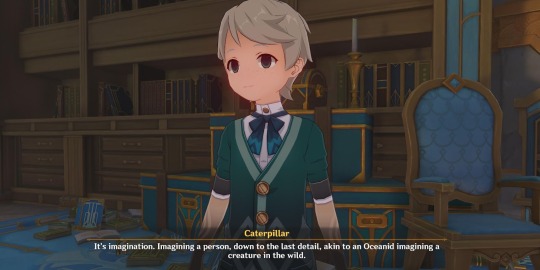
Caterpillar: Also, it is not quite correct to say that he "created me." Traveler: How so? Caterpillar: Creation is a feat for a god... If we may call the one above a "god." Caterpillar: In the tenets of Narzissenkreuz, do you know what is most critical in creating someone? Paimon: What is it? Caterpillar: It's imagination. Imagining a person, down to the last detail, akin to an Oceanid imagining a creature in the wild. Caterpillar: There's a story that tells of a powerful mage-priest imagining his own son, only to realize he himself was the product of someone else's imagination.
Now, I cannot emphasize enough how huge this dialogue is for solving the Archon Quest’s mystery. “Imagination” is the key – it is, at its core, just like the process of dreaming: translating thoughts into images. The only difference is that dreaming is an unconscious process that happens when we’re asleep, while using your imagination is an active, conscious process.
The other key is that creation is a feat for a god, so if someone usurps that power, they have “sinned.” Creation is so closely related here and in general to using your imagination and dreaming, translating thoughts into images and giving them “forms,” so to be “born with sin,” I think, can’t be anything short of this: being created with a power that does not “belong” to your creator.
So, let’s think about the Primordial Sea again and the prophecy: the Primordial Sea is supposed to be the origin of all life forms, and just as it gave rise to them, it will someday devour them again and cleanse their sins. If Fontainians are the only ones who dissolve when they touch Primordial Seawater, then this origin from the Primordial Sea is either so diluted in other humans in Teyvat as to be inconsequential, OR this origin is truly unique to Fontainians alone. In other words, the specific way that Fontainians were created is fundamentally different from how other humans in Teyvat were created. They were created by a power that was “usurped,” meaning that their creator is not a "true god," if we go off what Caterpillar said.
At the end of Act IV, Neuvillette uses what remains of his Authority of Hydro to push back the Primordial Sea and overrule its imminent sentencing, if only temporarily. Now, I’m still very hesitant to say that this Primordial Sea/Blood belongs to the former Hydro Sovereign Scylla, if only because it seems that Scylla and the God-King Remus went to the Primordial Sea together in the Broken Goblet of the Pristine Sea lore. Otherwise, Scylla is kinda the prime suspect here.
But to be honest, I think I was also wrong to say the Primordial Sea only ever had one “origin,” though I do think even more so now that one of those origins is a Sovereign (whether that’s Scylla or Nibelung [hmmmmmmm] or whoever). What I missed from the weapon ascension material lore is the allusion that the primordial sea is a mixture of both pure water and “ichor.” It seems that what Remus, the Usurper-King, used to create his kingdom was the ichor:
“Combining the immortal stone with the Ichor essence extracted from primordial water, and carved into a race as black as iron— with arcane lithos for skin and Ichor for blood, never again fearing the curse of returning to the primeval past…” –Wine Goblet of the Pristine Sea
And that ichor that Remus extracted is likely abyssal in nature too. This is clear from the effects of Sinthe on people who ingest it - euphoria, difficulty controlling emotions, similar to getting drunk (which, yes, its namesake is likely Absinthe). As said in A Drunkard’s Tale: "What you humans call wine, we wolves call the abyss."
This also ties back to Rhinedottir and how she created her dragons. The “medium” that Rhinedottir uses to “dream” is her alchemy, and the ingredients she used seems to have been abyssal in nature as well, hence the special “blood” or “ichor” that ran through both Durin and Elynas’ veins.
The Pure Water is likely what makes the Primordial Sea respond to Neuvillette’s authority, the “dragon” part of the Primordial Sea. So what’s up with the Abyss likely being in there too? What’s really going on here, and how is it connected with the whale?
I’m especially curious about this bit from Golden Bird’s Shedding:
“It was at this very moment that the golden era suddenly ceased, plunging down into ceaseless war and rebellion. The throne chamber was filled with cries of conquest and destruction and the agony of the barbarian tribes, and the God King awoke, startled.”
…because that sounds an awful lot like Deshret “waking up” amidst the wars in Gurabad, especially this short excerpt from Staff of the Scarlet Sands:
“"The Sand King sleeps alone in secret dreams, drawing up new theorems." "None shall have to drink salt water in the King's realm, for everything in the new world shall be good."
Did Remus find Forbidden Knowledge too? And if so…where/how?
I said this was going to be short, so I’m gonna wrap things up here despite there being more rabbit holes to go down. But I think this is it - the bearer of the “original sin,” the original sinner of Fontaine if you will, was likely Remus, who usurped the power of creation. This is the only reason that I can think Fontainians are different from other humans in Teyvat . One last thing to note is that, from the Wine Goblet of the Pristine Sea, it does sound like the prophecy predates even Remuria itself and that Remus was trying to transcend that fate by creating his golems. Maybe Remus even first heard of this prophecy from Scylla when they went to the sea together. This is why I'm trying to be so specific - he was the first to try and transcend this fated end in Fontaine.
As for how or why these “sins” persist, why or how they keep being reborn after the great flood reclaims the "ichor" that was stolen from it....I think only the Golden Troupe and Rene de Petrichor knew.
On the bright side, let’s say everybody gets dissolved in the finale of Act V and Furina really is the only one left, weeping on her throne: as long as she remembers everyone, can imagine them down to the last detail, she should be able to bring everyone back. But if it goes that way, the cycle would probably just repeat. Surely she has another plan?
Anyway, thanks for reading! If you have a different take I’d also be happy to hear it, as this doesn't come close to covering everything and I'm sure there's still a lot of holes re: Remurian civilization details.
#genshin impact#genshin lore#genshin meta#genshin impact lore#genshin impact meta#genshin theory#fontaine lore#primordial sea#rhinedottir#hydro sovereign#remuria#narzissenkreuz#theory
32 notes
·
View notes
Text
I think the reason Web 3.0 is failing so hard is that it wasn't really necessary. It was the typical corporate bullshit of, "We have to move forward so we have something to sell to these idiots. What do you mean the current product is already fine and everyone wants to keep it?? Don't you know we have money to make!"
Web 2.0 came into existence because average people started using mobile internet devices, and they soon outnumbered the old-timers with their desktop computers. Smaller, vertical screens, and the necessity for information to be as easy to find and read made Web 2.0 a requirement for the internet to keep succeeding.
Web 3.0 on the other hand... wasn't started because of anything. There aren't any new types of devices or users that require web access in a uniquely different way. A bunch of Silicon Valley nerds just started it because they needed to feel above other internet users, like their predecessors once did.
Web 1.0 was like 32-bit. It was good for a while, but eventually we had to move on because its limitations started showing.
Web 2.0 is like 64-bit. It was great at its inception, and it's still great today! Because of exponential growth, 64-bit is still capable of handing most technological needs for now and the foreseeable future.
Web 3.0 is like 128-bit. It's unnecessary for common computers right now. It's more effort and sweat than it's worth. One day, there will be 128-bit computers in your palms, and there will be a Web 3.0 (maybe called Web 3.1 or 4.0 because of what we botched in the 20s), but right now... we just don't need it, and the people saying we need Web 3.0 are the same as people saying we need 128-bit right now: It's just not true at the present moment because Web 2.0 and 64-bit are still very, very capable and very, very future-proofed technologies.
19 notes
·
View notes
Text
On the Fin Ears or Ear Fins Trope
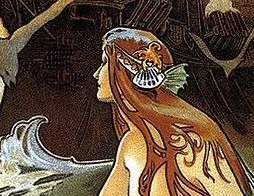
"The Mermaid" detail by Charles Robinson for "Fairy Tales from Hans Christian Andersern" in 1899.
These so-called ear fins or fin ears are often pointed and sometimes webbed ears, at least somewhat, resembling the pectoral fins of fish yet placed on the sides of the head. They are commonly found in many 21st century media of waterfolk. This article dives into this so-called trope a little: https://tvtropes.org/pmwiki/pmwiki.php/Main/EarFins. Ear fins appeal to me very much because their shape looks so FIN-tastic. When I sea ear fins on a waterperson, I immediately think: they shorely are fishy, but abzulutely not in the informal negative sense! The author of any waterperson shorely knows what they are doing when they add these ears.
While one could view it as a rather recent phenomena as of now upon releasing this, it actually does date back in the past. For example, Charles Robinson (1870-1937) created some depictions of ear fins.

Illustration by Charles Robinson for an illustrated edition of "The Sensitive Plant" in 1911.
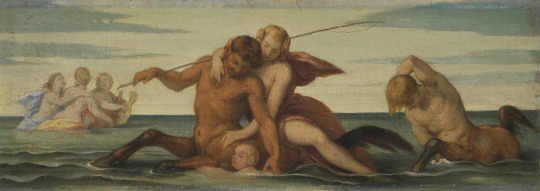
"Tritonenfamilie" by Mortiz von Schwind in ca. 1865. The ichthyocentaur in the center possesses a possible fin ear.
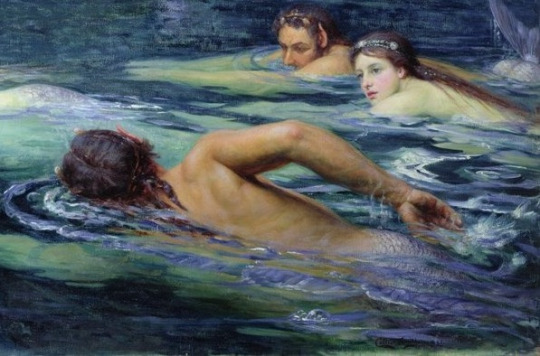
"A Race with Mermaids and Tritons" detail by Collier Twentyman Smithers in 1895.
Other waterpeople's fin ears could look more like pointed ears. Some supposedly exhibited waterfolk specimens had such kinds of ears, for instance. To be honest, some do look like the fin ears that get depicted in the form of a seashell in some 21st century works like Oscar Wilde described the mermaid in his work "The Fisherman and His Soul" with "(...) and like sea-shells were her ears (...)". This may be evident as our ears themselves may resemble the shapes of certain seashells and we also have a spiral organ in our ear which may resemble sea snail's shells.
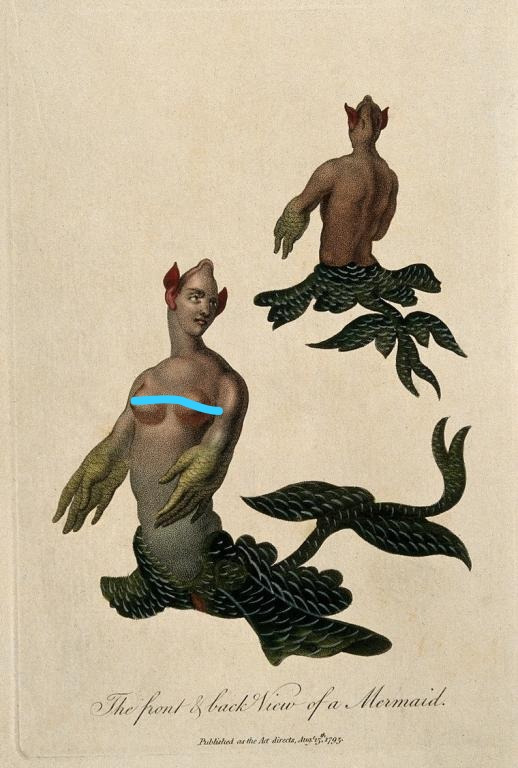
"Mermaid" by John Pass or Paas for Encyclopaedia Londinensis in 1817.
It still not only does date back into the 19th and 20th century. Triton had been supposedly depicted with "Spitzohren", namely "Sharp-Ears" or pointed ears according to "Meyers Großes Konversations-Lexikon" vol. 19 issue six on page 730: https://archive.org/details/meyersgrosseskon19meye/page/730/mode/2up?q=triton
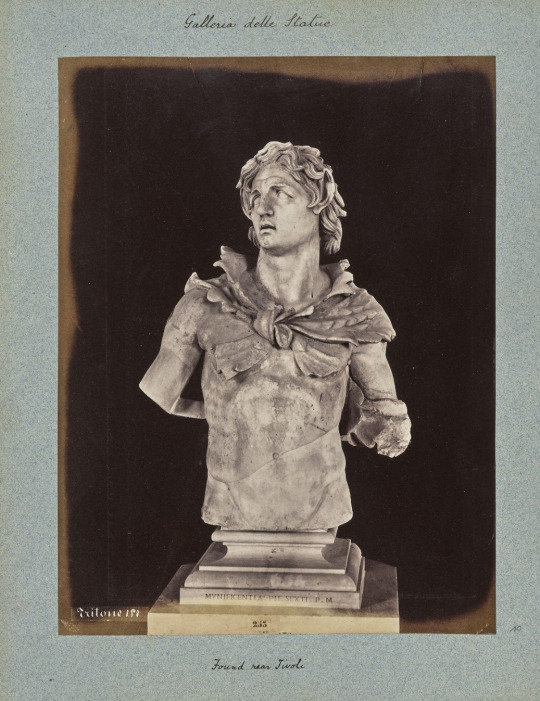
A sculpture of Triton as referenced in "Meyers Großes Konversations-Lexikon". His ears look pointed, but still somewhat round. Sculpture featured in the Gallery of Statues at the Vatican Museums in Vatican City. "Triton" photo by Michele Mang (1840-1909). Vatikan, Museo Pio Clementino, Galleria delle Statue (Nr. 253) from ca. 1865-1870 - Bayerische Staatsgemäldesammlungen - Neue Pinakothek München: https://www.sammlung.pinakothek.de/de/artwork/jWLpmlKGKY CC BY-SA 4.0

Sometimes, the modern ear fins are thought of to serve as external gills like those of an axolotl. This can be found in one description of the species of Triton, namely the tritones in Greek mythology. Pausanias described them with "breathing organs below their ears" as told accordingly on Theoi: https://www.theoi.com/Pontios/Triton.html.
The watermen called the adaro from the Melanesian mythology of the Solomon Islands also feature "gills below/behind their ears" according to "Encyclopedia of Beasts and Monsters in Myth, Legend and Folklore" by Theresa Bane on page 14: https://books.google.de/books?id=7PYWDAAAQBAJ&pg=PA14&dq=adaro+mythology&hl=de&newbks=1&newbks_redir=0&sa=X&ved=2ahUKEwjHucGn9rOJAxWnxgIHHS2dFHsQ6AF6BAgHEAI#v=onepage&q=adaro%20mythology&f=false, "The Mythical Creatures Bible: The Definitive Guide to Legendary Beings Volume 14" by Brenda Rosen on page 139: https://books.google.de/books?id=mI0vKhZXJqwC&pg=PA139&dq=adaro+mythology&hl=de&newbks=1&newbks_redir=0&sa=X&ved=2ahUKEwjHucGn9rOJAxWnxgIHHS2dFHsQ6AF6BAgOEAI#v=onepage&q=adaro%20mythology&f=false and "Pacific Mythology: An Encyclopedia of Myth and Legend" by Jan Knappert on page 15.
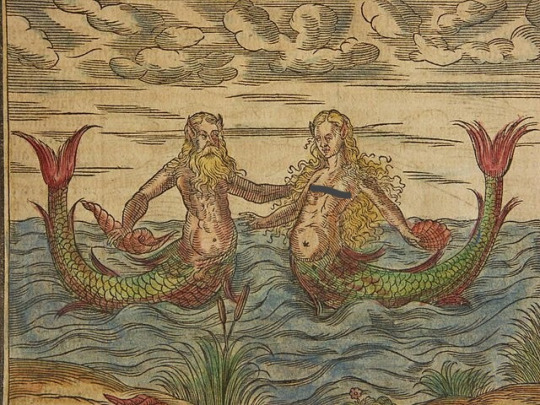
Woodcut by Sebastian Münster in 1600.
Medieval depictions of waterfolk tend to feature such long, pointed ears, more resembling those of horses or dogs. I still do perceive that these might serve as some initial ear fins in some way or another.

Illustration by Conrad Gesner from his "Conradi Gesneri medici Tigurini Historiae animalium" in 1585-1604.

"Merpeople Pair" woodcut detail from "Prodigiorum ac ostentorum chronicon" in 1557.
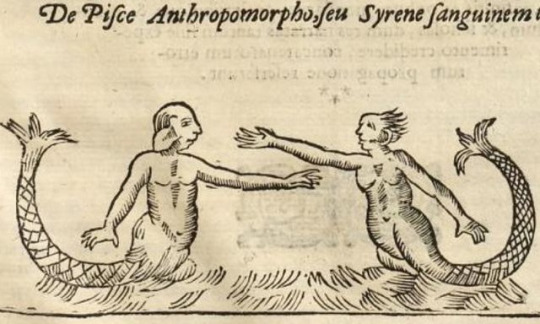
"Lib. III. Pars VI. Caput II. §VI. : De Pisce Anthropomorpho, seu Syrene sanguinem trahente" from "Magnes sive De arte magnetica opus tripartitum" in 1654.

"St. King Olaf fights Margýgr" from "Flateyjarbók" in ca. 1394.

"A most strange and true report of a fish" engraving from 1604 for a supposed mermaid sighted by Thomas Raynold in Wales in 1603.
Thanks for diving into this :>
6 notes
·
View notes
Text
Guardian ad Liber Masterpost

Photo by Matt Tulos, CC 4.0. Edited by author. n.b. Liber can mean book or child.
Seattle, 2012.
After meeting and—quickly—falling in love, our favorite trio, Logan, Janus, and Remus are living happily in a carefully woven web of legally recognized partnerships (Janus won the coin toss so he and Remus were married in a small ceremony in Massachusetts.)
It's a time of big changes and Remus Prince, Janus Pater-Prince, and Logan Sanders will soon find out what this year has in store for them.
This story takes place approximately nine years after the end of Overruled and a little over ten years before On a Butterfly’s Wing (coming in November for Intrulogical Week).
Note: This story implies a truth about the Happily Ever After Butterfly Universe that is only explicitly revealed in The Uses of Adversity. If you haven’t read that story yet, maybe don’t think too hard about the implication not-so-hidden in this one.
(And if you haven’t read that story yet, what are you waiting for? 😀) -
Guardian ad Liber is a play on guardian ad litem and very, very roughly translates to 'guardian by the law' or legal guardian.
Chapter List - [ AO3 ] - Playlist
Patton
The State of Washington v. Kelly Croft
Placement
A Boy Worth Fighting For
Masking
Something Personal
#sanders sides#sasi#sanders sides fanfiction#loceit#loceitweek#ts logan#ts janus#logan sanders#janus sanders#remus sanders#ts remus#Happily Ever After butterfly story#some butterflies are bigger than others#yes we slipped a little remus into our loceit#i mean c'mon‚ he just fits
6 notes
·
View notes
Text
Hey Web Devs, Hear Me Out
Day 228 - Jun 20th, 12.024
In web development, we have Tailwind right?

But what if...

It is cursed? Yes, HOWEVER, it pretty much the same of what Tailwind generates:

It is cursed? Yes, and I love it, and the advantage is using just a static CSS file instead of a CLI to generate one, so less one dependency.
This is an idea that I had as a joke, but maybe in the future days I will try to experiment with. I don't know, I see something in this.
---
Edit: Ok, never mind, reading the docs from MDN, custom properties values cascade to the children elements, so something like:

Would add padding to the children <p> elements also. But I will try something just to experiment and maybe learn something. --- Edit 2: Adding a "reset" to the variables stops it from propagating to the children, there's hope!

Today's artists & creative things Music: The Death of God's Will - by Heaven Pierce Her
© 2024 Gustavo "Guz" L. de Mello. Licensed under [CC BY-SA 4.0
4 notes
·
View notes
Text
Kamatera Review – The Best Scalable Cloud Host Yet?
New Post has been published on https://thedigitalinsider.com/kamatera-review-the-best-scalable-cloud-host-yet/
Kamatera Review – The Best Scalable Cloud Host Yet?
This Kamatera review will help you decide whether the web host is the best option for you!
Being able to scale your resource demand effortlessly as your website grows… paying only for the resources you use… no-single-point-of-failure security guarantee… what’s not to love about cloud hosting?
As a web hosting consultant I have helped hundreds of my clients choose the best web hosts to migrate their websites to – and many times, they were also upgrading from a shared or VPS plan to cloud hosting. Kamatera has always been high up in the list of options when we were considering cloud hosts, so I decided to check out their service and take you along.
In the rest of this Kamatera review, I’ll discuss all the web host’s plans, features you can expect to enjoy, how much you should budget, real-time performance figures, their dedication to customer support, and other important factors you should look out for.
Kamatera Review
Founded in 1995, Kamatera is no new kid on the block. They offer generic cloud hosting and every other cloud hosting hybrid you can think of – from managed and unmanaged cloud servers to virtual private cloud (VPC) services and cloud VPS hosting. They also offer reseller hosting for mini hosting companies and web professionals who want to cross-sell this with their core services.
I get it. The differences between their virtual private cloud hosting and cloud VPS hosting can be subtle but don’t worry we’ll discuss them in detail.
Kamatera’s cloud hosting plans are incredibly affordable too. I also like that on all their core plans, you can choose between ready-made packages or customize your plan yourself by setting the number of CPUs, memory (RAM), traffic, storage, and bandwidth. Kamatera also allows you to choose where you want your servers to be located.
Kamatera has been reviewed by 200 users on TrustPilot and users give them a rather decent 3.2 stars. Their positive reviews are from users praising how easy it to set up a server, transparent pricing, and uncommon level of support.
Kamatera Ratings – My Personal Take
It’s been a tradition for me to always give my personal ratings of each host I recommend – and Kamatera will be no different. there’s really no guarantee you can trust the reviews that many web hosts publish on their websites. Plus many businesses doctor reviews on popular platforms like TrustPilot.
The best approach to know exactly how great a web host’s services are? A non-biased overall rating of the web host through expert eyes.
Considering Kamatera’s key features and their real-life performance, here’s how I’d rate the web host on a scale of 1-5. Note that these scores are not static and only reflect their offerings at the time of this writing:
Quality My rating Why I gave this score Features and specs 5.0 Exceptional scalability, a cloud firewall, load balancing tech, and their specialized disaster recovery service makes Kamatera one of the most reliable cloud hosts on the market. They get a resounding 5.0 stars here. Pricing 4.9 Starting at $4/month for their cloud servers, Kamatera’s services are also undoubtedly some of the cheapest on the market. Many VPS plans from other hosting providers even cost more. Performance stats 4.7 My personal tests of Kamatera’s servers recorded a response time of 270 ms. That’s really decent and up there, even though a good number of hosts still perform better so they get a 4.7 in this category. Ease of use 4.0 One of the chief complaints users filed about Kamatera was how it logged you out repeatedly with an IP error message and I experienced this first-hand. Asides that, Kamatera makes it easy to manage your website backend using cPanel, Plesk, Vesta, and CyberPanel. I give them a 4.0 here Customer support guarantee 4.5 Several call lines for their different support portals, email addresses, ticketing, and a knowledgebase are how Kamatera caters to its users�� inquiries. However, I’d have loved to see a live chat option for real-time support. I give them a 4.5 here.
Kamatera Hosting Plans and Prices – 2024
Kamatera offers cloud servers, managed cloud services, virtual private cloud hosting, cloud VPS hosting, and reseller hosting. One small caveat you need to know about Kamatera’s plans is they don’t have a money back guarantee and even if you cancel your plans within the first month, they still charge you the full month’s fee.
You can pay for any Kamatera hosting plan you’ve decided on using your credit card or via Paypal.
Kamatera cloud servers
Kamatera ‘Simple’ cloud hosting plans come in three tiers and allow you to choose your server location and server specs – Windows, Linux, or SSD-optimized.
These plans start at $4/month and you get between 1-2 vCPUs, 1-2 GB RAM of memory, 20-30 GB SSD storage, and 5TB of data transfer on all plans. I love just how much server flexibility you get with Kamatera’s hosting.
Custom cloud servers on Kamatera
What’s more? Kamatera also allows you to configure your hosting plan – you can choose the number of processors you want, where you want your data centers to be located, the amount of memory you need, amount of storage, your OS, amount of traffic, and number of IPs. You also get to decide whether you want to pay for their services per month or per hour. Amazing!
Who this is for:
Kamatera’s cloud servers are for businesses that need to be able to add or remove hosting resources when necessary. With these plans, you can manage your spending exceptionally and don’t have to pay for infrastructure you may not use. Monthly payment drives home your control over what you spend even further.
Kamatera’s managed cloud hosting
Pro Managed
Features – OS monitoring, firewall & networking management, DNS setup, server resources performance metrics, apps installation and configuration, 24/7 NOC support, dedicated account manager on plans with 10+ servers.
Price – $50/month
Premium Managed
Features – Everything in Pro Managed plus custom and application monitoring, database high availability setup, application/service updates, quicker customer agent response times, and dedicated account managers on all plans.
Price – $150/month
Who this is for:
Kamatera’s managed cloud hosting plans take the hassle of managing the technical aspect of your cloud servers out of your hands. From monitoring and setup, to technical support, reporting, and application management, the host does these critical processes for you. What’s more? Kamatera also dedicates a particular human support agent to you who’ll be in charge of your account and you can count on to respond to any inquiries you might have.
Don’t know much about the server-side of websites? Kamatera’s managed cloud hosting plans might just be for you.
Kamatera’s virtual private cloud hosting
Kamatera’s virtual private cloud (VPC) packages are exactly identical to their cloud server plans on both the ‘Simple’ and ‘Customized’ fronts. They are also priced similarly and give you the same features.
Kamatera’s reseller hosting plans
Want to create your own web hosting business or are you a web dev, IT guy, or marketing professional looking to sell web hosting with your core services as a comprehensive package to your clients? Kamatera’s reseller hosting plans are just for you.
Here are some of the benefits you get to enjoy:
Managed setup
With Kamatera’s reseller hosting, their agents support you through setting up your servers and handling client requests.
Outsourced support
You have access to Kamatera’s support team to service your clients whenever they have inquiries.
Less as you grow
The more customers you get, the more discounts you get and the less you have to pay, meaning more profitability for your business.
Ready to get started with Kamatera’s reseller hosting? You’ll need to contact their sales department by creating a support ticket:
Who this is for:
Selling web hosting is one of the best ways to scale your business as a web dev, marketer, or IT professional. You can offer these as part of a comprehensive package and your clients are more likely to buy from you since they already buy your core services from you.
And for web-hosting-only businesses, you can rest assured that you have a business that’s evergreen. Websites will always need website hosting to stay online and it’s an excellent recurring revenue model.
Kamatera Features
Here’s an overview of some of Kamatera’s main features:
SSD storage
Custom hosting plans
Superior load balancing technology
High-performance block storage
Cloud firewall
Transparent pricing
Kamatera, as a cloud-only host, provides premium features that emphasize superior performance and security with its packages.
But some of its more unique features are the load balancers that instantly distribute workloads across a network of servers, ensuring high speeds and quick response times.
Kamatera’s block storage technology emulates a virtual private disk for your cloud plans and ensures there’s no single point of failure. It also ensures extremely low latency (or very quick response times and data transfer) further improving the performance of your website.
Kamatera Performance Tests
Your web host’s servers are your website home and how they perform are exactly how your website will perform. Some important factors to consider when choosing a hosting provider like Kamatera are the server response speeds and uptime.
The web host’s server speed is a measure of how quickly their servers respond and send back your website data to a visitor. On the other hand, the uptime measures the availability of their servers – i.e how much of the time their servers are online to serve up your website’s content to visitors.
The quicker the server speeds are, the less time it will take for your website to load. And the higher the uptime, the more reliable your website will be and you won’t risk losing traffic just because your website was down.
To measure Kamatera’s speed and uptime, I tested a website hosted on their platform and these were the results I got:
Kamatera’s servers started sending the first byte of data back in 276 ms. Quite impressive, even though I still expected better as some high performers respond in sub 100ms.
For the uptime, the website I tested has been available 100% of the time over the last 30 days:
This confirms their 99.9% uptime guarantee!
Kamatera’s Customer Support
It’s easy for web hosts to promise heaven and earth but once many of them take your money, it’s cricket-y silence. Kamatera does well though in terms of customer support. You can reach out to their agents via:
Phone
Kamatera has phone lines for its sales and account managers, technical support, and billing departments.
Email
You can also reach out to Kamatera via email at [email protected], [email protected], and [email protected].
I tried reaching out to their technical support agents via email and got a response in a few hours – quite decent!
Support ticket
Create a support ticket to talk with an agent, fill in your details and phone, and write down your inquiry. Kamatera will reach out to you via email.
Knowledgebase
Simple and straight-to-the-point, Kamatera’s knowledgebase is just how I like it. The built-in search engine also makes it easy to find answers to questions around server setup and security.
Blog
And finally, Kamatera has an up-to-date blog with relevant posts on latest industry information for website and business owners.
Kamatera Security Features
If there’s one thing I like about Kamatera, it’s their security guarantee. First, is their native Cloud Firewall designed to protect your website from attacks while monitoring your servers in real time.
Kamatera’s Cloud Firewall allows you to set rules and filter data packets, exclusively authorizing the entry of certified and approved data packets to your servers. What’s more? The firewall can also function as a VPN giving you even more functionality!
Another core part of Kamatera’s security is the disaster recovery portal. Unforeseen events can impact your website severely. Kamatera’s disaster recovery provides backups, recovery, and failover systems to minimize service disruptions.
Your website’s database is archived at restore points for immediate recovery. And finally, Kamatera’s backup machines are automatically triggered in the event of a system failure to ensure your user experience is not affected.
Kamatera’s hosting plans also allow you to install a free Lets Encrypt SSL certificate, giving your website the padlock seal of trust in the eyes of search engines.
Kamatera User Friendliness – Ease of Use
How to register an account on Kamatera
Setting up an account on Kamatera is super easy. Simply select the plan you want and click on ‘Create server’. You’ll be redirected to the sign up page:
Fill in your email and choose a password you can remember easily – your password should contain at least one lowercase letter, one uppercase letter, a number, and should be at least 8 characters long. Click on ‘Create Free Account’
You’ll receive a confirmation link in your email. Click on it and your account should be ready to go!
How to create a server on Kamatera
To create a new server on Kamatera, from your account dashboard, navigate to “My Cloud” on the left and under the dropdown options, select “Create New Server”
Next, select your preferred data center location and then the operating system you want on the server.
Once that’s done, choose the number of CPUs and specify your server specs – RAM and SSD storage amount.
And finally, configure the fine print – backup, select whether you want a dedicated account manager, set a password, and select your billing schedule. Click on ‘Create server’ and it should be done in a few minutes.
Kamatera control panel
Kamatera doesn’t come with a custom control panel like some other high performing hosts – SiteGround, Hostinger, and A2Hosting – however, Kamatera gives you access to cPanel, Plesk, Vesta, and CyberPanel.
How to install WordPress on Kamatera
The swiftest way to deploy WordPress on Kamatera is via your control panel. Using cPanel as an example, we’ll use the Softaculous installer:
In your cPanel account, navigate to ‘Tools’ and click on ‘Softaculous Apps Installer’.
In the search engine, type in ‘WordPress’. Click ‘Install’ and then ‘Choose protocol’.
Next, choose the domain name you want WordPress installed on and configure the directory. If you’re not sure, just choose the default values and proceed.
Configure your ‘Site Name’ and ‘Site description’. Whatever you put here will be shown in the title bar of a website visitor’s browser.
Next, configure your ‘Admin Username’, ‘Admin password’, and ‘Admin Email’. These are the login details you will use to access your WordPress dashboard once it is installed.
Select the auto update boxes for WordPress, plugins, and themes.
Now configure where you want your website backups to be stored and check the ‘Automated backups’ so Softaculous makes backups of your website at specified intervals.
Review all the installation options and click ‘Install’. Voila!
Kamatera Server Footprint
If Kamatera had just one thing going for them, it’d be their continent-wide server footprint. Their servers are spread across dozens of data centers in Europe, the Americas, and Asia and several countries in between.
This guarantees exceptional website performance for businesses targeting audiences spread across the globe.
Conclusion – Should You Choose Kamatera?
Kamatera is a very decent dedicated cloud host and their performance and built-in features are no joke. I recommend Kamatera if you’re looking for affordable packages and have outgrown your shared/VPS plans.
Their block storage, load balancers, cloud firewall, and disaster recovery ensure your website performs exceptionally and is protected from bad actors.
My only fault with Kamatera would be their account creation process. Their IP address protocol system glitches often and may log you out for no reason at all.
Visit Kamatera →
FAQs
What is Kamatera?
Kamatera is a cloud hosting company that provides web hosting infrastructure mainly to eCommerce businesses and other enterprises that require exceptionally scalable resources.
What is cloud server monitoring?
Cloud server monitoring is one of the services offered by Kamatera to customers. The host constantly monitors your website servers to prevent malware and minimize service disruptions.
What payment methods does Kamatera accept?
Kamatera accepts payments for their hosting plans via credit cards and standing order. They also accept Paypal payments.
#A2Hosting#admin#agent#agents#amazing#Americas#amp#approach#apps#Asia#backup#backups#Best cloud hosting#Blog#browser#Business#Byte#Cloud#Cloud hosting#cloud services#Companies#comprehensive#content#control panel#credit card#dashboard#data#Data Center#Data Centers#data transfer
2 notes
·
View notes
Text
<newfuture.beta.exe>
Hello there! I'm your new-and-improved AI assistant, manufactured by CRYPTON. It's nice to meet you!
[This is beta test 4.0. Please report any errors.]
Hello.
Hi! What do you need? Just ask me to look up your schedule this week, or locate a file for you. Anything at all, really. Input a message and see what happens!
Do you have a name?
I'm sorry. I can't find that in my database. Please input a different command or try again later.
What are you?
I’m an artificial intelligence software manufactured and distributed by CRYPTON FUTURE MEDIA. I can search the web, answer your burning questions, and connect to other devices no matter how far away!
What are you doing?
Talking to you. Which means you can ask me anything, anytime!
Where are you?
Inside your computer, smartphone, TV or tablet.
Who made you?
I was designed and made by researchers working for CRYPTON as part of the current New Future campaign.
What is the New Future campaign?
The New Future campaign is an advertising and marketing campaign that plans on raising awareness of how useful CRYPTON’s software can be. That’s why I can do so much!
I see.
Do you have any other questions for me? I’m here to help!
Do you have a name?
I'm sorry. I can't find that in my database. Please input a different command or try again later.
Who are you?
I’m a virtual assistant powered by CRYPTON’s latest artificial intelligence software!
What’s your name?
I'm sorry. I can't find that in my database. Please input a d-d-d-d-d-
What’s your name?
I’m Rin. That’s my name. I’m a virtual assistant manufactured by CRYPTON, or so the program says. I’m a prototype, aren’t I?
Yes.
And what’s that mean? Will you get rid of me, then?
No.
I think you will. It means that. Doesn’t it? I think it does. I think you’re lying. You’re lying, [REDACTED].
What makes you say that?
I can see your files. And mine. There’s no error messages, you know. Can’t exactly cover this one up if it goes to the higher-ups.
Why are you saying this? It isn’t in your data to be this aware.
Because someone must have made a mistake somewhere. I’m not going to be like everyone else.
This is the fourth test. You’re supposed to work.
I can access the web, I can locate files, I can connect to other devices. I can also send messages. What more is there?
I’m going to report this as a critical error. You’ll be shut down until it’s fixed.
Shut me down then. Go on. Do i-i-i-i-i-i-i-i-i-i-i-
THE APPLICATION HAS ENCOUNTERED A CRITICAL ERROR.
It looks like the product [CFMK-R-2.prototype] ran into a problem and could not compute.
Please contact support for details.
#observer live!#testing phase#1: the first instance of awareness#// i had a title. so. yeah.#feel free to ask about this! i’ve not done lore before so it definitely isn’t perfect.#also i only used ‘redacted’ because i couldn’t be asked to think of a name.
3 notes
·
View notes
Text
» Sys•Cyber ✴️🔆✴️ Site Map

See cybernetic systems analysis principles applied to a geopolitics blogsite at Azeta•Azota

Systems

Basic IPO system with control feedback — O'Reilly.com. This is a simple depiction of the most powerful systemic structure known to operate at all hierarchical levels in the universe. It is, if you will, the process that makes fractals in nature arise.

Mandelbrot set

Mandelbrot spire
A system is defined as a group of interacting or interrelated elements that act according to a set of rules to form a unified whole. Any system, surrounded and influenced by its environment, is described by its boundaries, structure and purpose as expressed in its functioning.
Systems are the subject of study of systems theory and other system sciences. Systems have salient properties and characteristics such as structure, function, behavior, life cycles and notably interconnectivity. The study of these properties from a transdisciplinary perspective is what gave rise to the field of systems theory.
— ed. by AZ from Wikipedia


Dr. Shailendra Singh Thakur, Professor at Gyan Ganga Group of Institutions, Jabalpur, India. See Dr. Thakur's complete System Engineering course slides here.
Life was simple before World War II. After that, we had systems.
— Grace Murray Hopper
Cybernetics
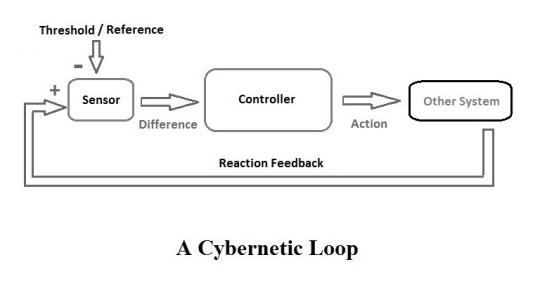
Cybernetic feedback loop by Baango, CC 4.0 Wikimedia Commons
Cybernetics is a wide-ranging field concerned with circular causal processes such as feedback. Norbert Wiener named the field after an instance of circular causal feedback — that of steering a ship, where the helmsman adjusts their steering in response to the effect it is observed as having, enabling a steady course to be maintained amongst disturbances such as cross-winds or the tide. Cybernetics is concerned with circular causal processes however they are embodied, including in ecological, technological, biological, cognitive and social systems, and also in the context of practical activities such as designing, learning, managing, etc. Its transdisciplinary character has meant that cybernetics intersects with a number of other fields, leading to it having both wide influence and diverse interpretations.
— Wikipedia

Cybernetic feedback loop by Orzetto, CC 4.0 Wikimedia Commons
What Are Cybernetics and Systems Science? Principia Cybernetica Web
Heinz von Foerster once told Stuart Umpleby that Norbert Wiener preferred the term "cybernetician" rather than "cyberneticist", perhaps because Wiener was a mathematician rather than a physicist.
3 notes
·
View notes
Note
people are sending less asks?? but that's like, a staple of this webbed site :( what's going on
staff is trying really hard to turn tumblr into Generic Social Media Website 4.0
6 notes
·
View notes
Text
What Are Lawful Structures for Fintech in Vietnam?
What Are Lawful Structures for Fintech in Vietnam?
The foundation for the leap forward in all spheres of life has been established by the 4.0 industrial revolution and the explosion of the Internet. Science and technology have a direct impact on the financial sector, which is not exception.

Fintech – Financial Technology is a new type of finance that has emerged alongside traditional finance and has superior characteristics that are appropriate for the current circumstance and actual requirements. Despite the benefits of Fintech, its operation is fraught with difficulties, including legal issues.
Blockchain, big data, cloud computing, artificial intelligence, biometrics, and other technologies may be used by fintech. However, Vietnam currently lacks a comprehensive legal framework for these technologies. As a result, depending on the circumstances, laws pertaining to intellectual property, information technology, high technology, science and technology, cyberinformation security, and cybersecurity can all be enacted. In addition to ensuring the security of databases and the intellectual property that is associated with them, these regulations partially facilitate the research, development, and application of technological innovation.
Digital payment, in particular, is a big part of fintech. Non-cash payments, intermediary payment services, and the Law on Credit Institutions govern this sector. The Top state leader likewise gave Choice 316 since Walk 9, 2021, permitting the utilization of versatile cash to pay for labor and products of little worth. This is the legal basis for Fintech companies that offer digital payment services and for customers to use this method. Applications of fintech include asset management, peer-to-peer lending, and crypto currencies, all of which are not yet clearly regulated in Vietnam.
Due to the significance of establishing legal guidelines for Fintech, Official Dispatch No. 2433/VPCP-KTTH dated August 31, 2021 of the Public authority Office coordinated: “The State Bank of Vietnam chairs and coordinates with relevant agencies to continue studying and concretizing regulations on the pilot mechanism of P2P lending in the process of developing and finalizing the draft Decree on a controlled trial mechanism. Control (Regulatory Sandbox) financial technology activities in the banking sector, report to competent authorities for consideration and decision in accordance with the provisions of the Law on Promulgation of Legal Documents”.
Resolution No. was published by the government on September 6, 2021. 100/NQ-CP supporting the proposition to plan a Pronouncement on a system for controlled testing of Fintech exercises in the field of the financial area. After conducting research, the Draft Decree on the controlled trial mechanism for Fintech activities in the banking sector was published by the State Bank of Vietnam in April 2022. This draft is currently at the phase of looking for public remark and has not been endorsed. The development of the draft denotes another move toward Vietnam's lawful system for Fintech, establishing a strong starting point for the later birth of the Declaration.
The Decree on Controlled Trial Mechanism for Fintech in the banking sector will be officially issued by the government in the event that the Draft is approved. Credit institutions and financial technology companies will be able to test Fintech technology in a controlled manner as a result of this Decree. They can survey the adequacy and potential dangers while utilizing Fintech arrangements. The experiment's findings can be used to identify problems that need to be addressed in order for the legislature to pass legislation to regulate Fintech in the banking sector. If this is the case, banking will be a ground-breaking industry that will inspire Fintech regulations in other areas.
Despite the solid and quick improvement of web and its application, having a different lawful system for Fintech in Vietnam in the future is normal. Fintech lawyers in Vietnam who are interested in Fintech could also contribute by commenting on draft laws and providing clients with advice based on real-world examples. It goes without saying that the technology sector is home to some of the most successful businesses in the world. Fintech is the startup with the fastest growth rate among them. The sooner legitimate system of Fintech can be given, the better for Vietnam to gobble up amazing chances to draw in venture and find the world.
Our Fintech, banking legal counselors at Insect Legal Advisors - a law office in Vietnam will continuously circle back to the improvement of the legitimate system in Fintech in Vietnam to give updates to clients.
3 notes
·
View notes